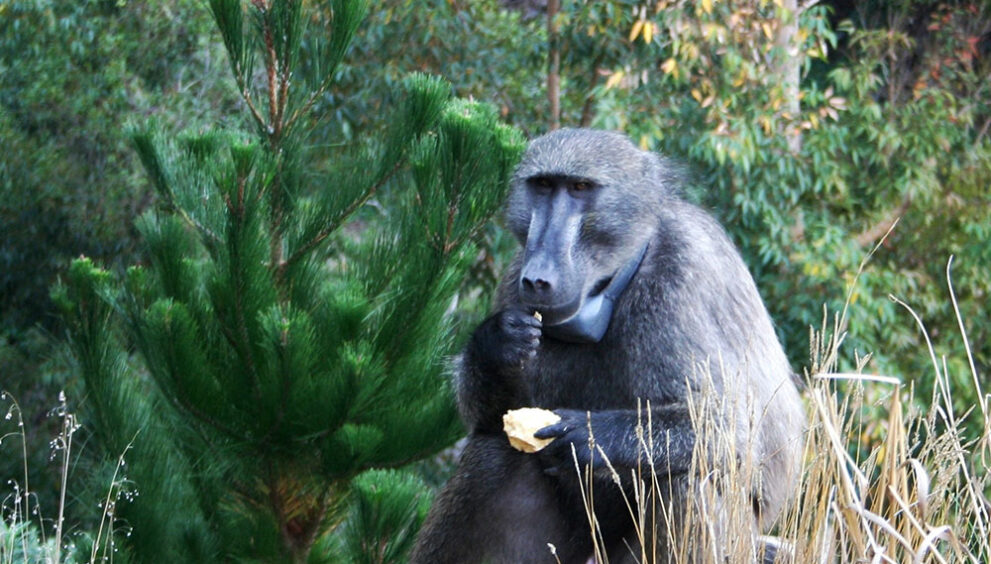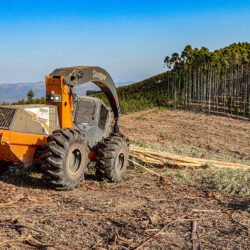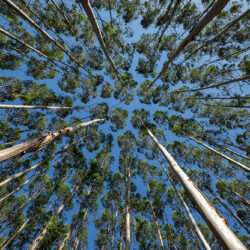Baboons vs forestry is a highly controversial topic that can be likened to a hornet’s nest. It’s best left alone, because when it is disturbed it tends to explode and cause an almighty furore.
At the moment things have been fairly quiet on the home front, but the problem has not gone away. In fact baboon damage to commercial pines – and now eucalypts – is steadily rising (mainly in Mpumalanga province in South Africa) as bark chewing among plantation dwelling baboons spreads from troop to troop, and from generation to generation.
A recent webinar hosted by FAO, FABI and FISNA (Forest Invasive Species Network for Africa) put this controversial topic into the spotlight.
While research into understanding baboon behaviour is ongoing in South Africa, there are still big question marks around why exactly baboons chew bark, and how to reduce baboon damage in commercial plantations in a primate-friendly manner?
Causes of bark chewing among plantation dwelling baboons cannot be attributed to a single overriding factor, but is more likely a combination of several factors, according to researchers:-
- Baboons living in plantations have too much spare time on their hands, so it helps to pass the time, they like the taste, and may even be mildly addicted to the activity.
- Plantation-dwelling troops are generally much bigger than troops living in wild, natural landscapes and social structures are skewed with higher numbers of males. So bark chewing may be a way of reducing troop tension.
- Baboons appear to thrive in plantation environments as they provide good refuge, are safer (lack of natural predators) and because there is plenty of good food (bulbs, insects, pine nuts, mushrooms, bark etc.). The more time they spend in plantations, the more pine tree bark they tend to chew.

According to ICFR researcher Ilaria Germishuizen, the average troop size in Mpumalanga plantations is 42 individuals. The average troop size in adjacent natural forests is 18. It seems therefore that chacma baboons are becoming increasingly well adapted to living in plantations. This is not good news for plantation owners as the damage to growing trees increases. For example, up to 87% of trees in one plot being monitored as part of the research was damaged by baboons. This activity threatens some 60% of pine trees growing in South Africa.
The bigger trees in a stand are more likely to be chewed by baboons, while the damage to the bark impacts negatively on the growth of the tree. In extreme cases the timber from chewed trees is of such poor quality that it cannot be utilised – even for pulp.
How to reduce baboon damage to plantations is another ongoing debate with few primate-friendly solutions on the radar. I say ‘primate-friendly’ because many South African farmers with high value nut and fruit orchards simply shoot any baboon that sets foot on their farm. End of problem. This is not a viable option for forestry which is under much more intense scrutiny from members of the public and especially environmentalists. Chacma baboons are not a protected species so they are not well protected by the law.
Bark chewing in Argentina
Valentin Zarate, a PhD student at the Instituto de Biologica Subtropical at UnaM University, Argentina, provided some interesting info about Capuchin monkeys chewing the bark of pine trees in Argentina, causing extensive damage. Their research has shown that it may be a fall-back food resource for Capuchins when other food resources are scarce – e.g. in winter and early spring.

Forest owners in Argentina are providing supplementary food for Capuchins on feeding platforms during winter and spring months in an effort to keep them away from plantations, which is apparently showing some promise in reducing tree damage in that territory.
The ICFR is doing on-going work on monitoring baboon damage in Mpumalanga plantations, gaining a better understanding of baboons behaviour and mapping baboon damage hotspots.
But one gets the feeling that sooner or later someone is going kick over a hornet’s nest, and baboons and forestry will be in the limelight again.




